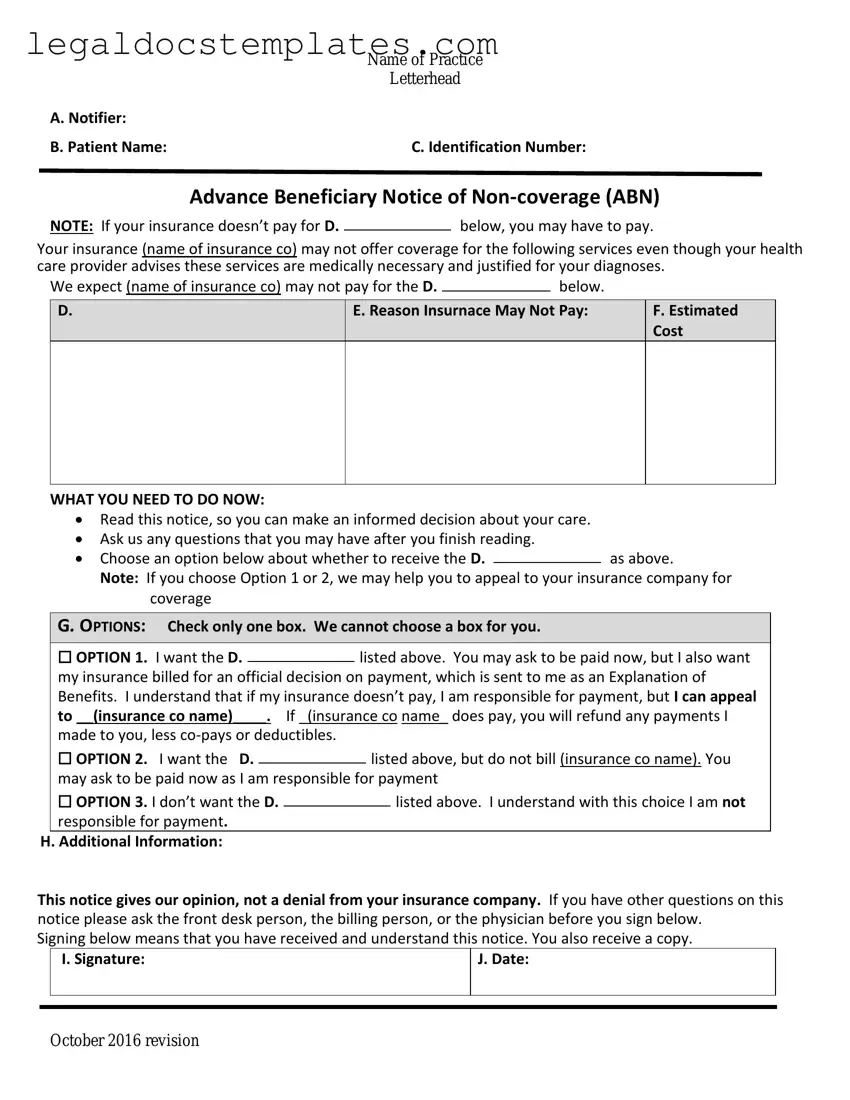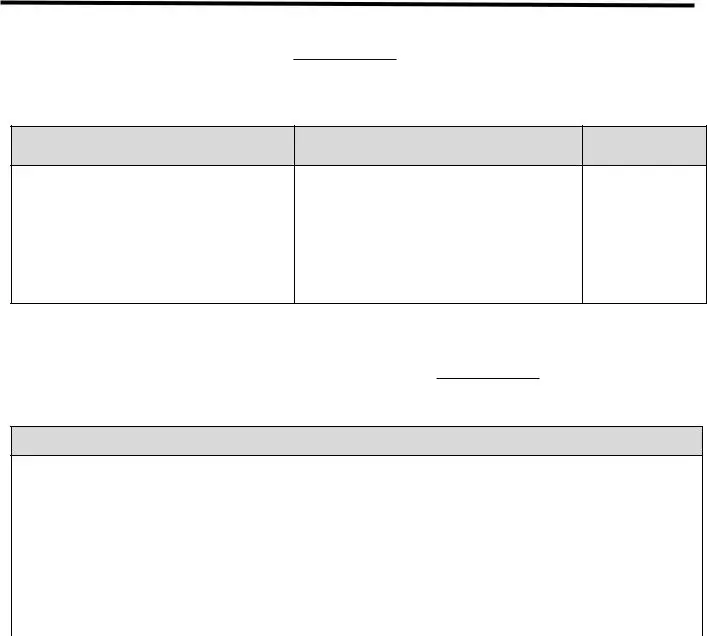The Advance Beneficiary Notice of Non-coverage (ABN) form shares similarities with the Notice of Exclusion from Medicare Benefits (NEMB). The NEMB informs patients about services that Medicare deems medically unnecessary. Like the ABN, it serves as a preemptive notification, ensuring that patients are informed about potential out-of-pocket costs for certain services Medicare might not cover. Both documents aim to provide clarity and prevent unexpected expenses for patients by outlining Medicare's coverage limits.
The Estimate of Medicare Benefits (EOMB) is another document with similarities to the ABN. The EOMB provides recipients with details regarding services or items billed to Medicare, showing what Medicare paid and what the patient might owe the provider. While the ABN is used to inform patients about potential non-coverage before receiving a service or item, the EOMB offers an after-the-fact breakdown of costs associated with received services. Both forms are integral in educating patients about their financial responsibilities.
A Privacy Practice Notice is also related to the ABN in its function to inform. This document explains how medical information about a patient may be used and disclosed, and how the patient can gain access to this information. Though it focuses on privacy rather than financial liability, like the ABN, it is critical in keeping patients informed about their rights and expectations, fostering transparency between healthcare providers and patients.
The Patient's Bill of Rights is a document that, similar to the ABN, is designed to inform and protect patients. This bill outlines patients' rights within the healthcare system, including the right to receive a clear explanation of their care. While the ABN specifically addresses the potential financial implications of Medicare non-coverage, the Patient's Bill of Rights encompasses a broader scope of patient rights and protections.
Consent forms are another category of documents related to the ABN. These forms are used to obtain a patient's permission before undergoing a specific medical treatment or procedure. Like the ABN, consent forms ensure that patients are fully informed about what they are agreeing to, including any potential risks, benefits, and financial implications, thereby promoting informed decision-making.
The Explanation of Benefits (EOB) document closely resembles the ABN's function. After services are rendered, the EOB provides detailed information on what the insurance plan covers, what it doesn't, and the reasons for such decisions. Like the ABN, which informs patients of potential non-coverage before a service is provided, the EOB informs patients after the fact, helping them understand their financial obligations.
The Medicare Summary Notice (MSN) is a document that Medicare recipients receive every three months, detailing the services and products billed to Medicare, what Medicare paid, and what the beneficiary may owe. It's akin to the ABN in its purpose to educate patients about their potential financial liability. However, the MSN is retrospective, providing a summary after services have been billed, while the ABN is a proactive measure.
Last, the Durable Medical Equipment (DME) Information Form shares similarities with the ABN, as it informs patients about the coverage of durable medical equipment under their insurance. While the ABN notifies patients about the possibility that Medicare may not cover certain services or items, the DME Information Form specifics about coverage for medical equipment, ensuring patients understand what costs they may be responsible for.

